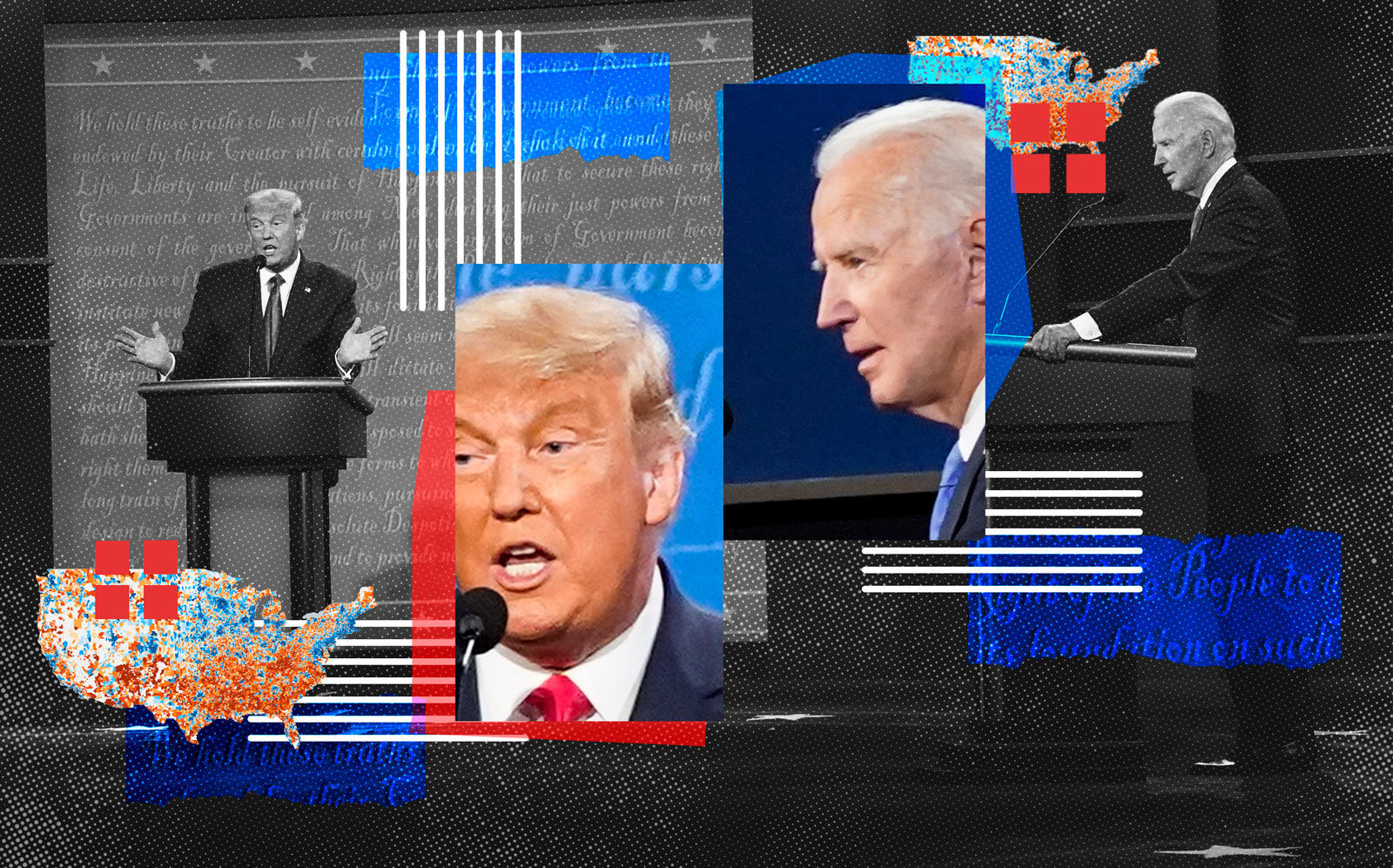At Thursday’s presidential debate, there was less interrupting and more real-estate related discussion.
The event marked the final faceoff between President Donald Trump and former Vice President Joe Biden before Election Day.
Housing was only briefly acknowledged in the first debate, which devolved into more of a shouting match than polite discourse. The topic wasn’t explicitly mentioned on Thursday night, but other issues that are rarely discussed on the national stage got significant play, including Opportunity Zones and energy-efficient building design.
Here’s what President Donald Trump and former Vice President Joe Biden said about these and other topics — and, crucially, what was missed.
1) Opportunity Zones
What was said: Moderator Kristen Welker asked Trump and Biden if they understood why Black Americans fear that their children will be targeted by police officers and others because of their race. Both candidates said they did, but the president pointed to the Opportunity Zones program as an example of why no one, with the “possible” exception of Abraham Lincoln, “has done more for the Black community than Donald Trump.”
“It’s one of the most successful programs. People don’t talk about it. Tremendous investment is being made,” Trump said. “Biggest beneficiary, the Black and Hispanic communities and then historically Black colleges and universities.”
Biden didn’t touch on Opportunity Zones but referred to Trump as “one of the most racist presidents we’ve had in modern history.”
What was missed: In January, the Treasury Department launched an investigation into the program, following multiple reports that it wasn’t adequately benefiting low-income communities.
A report by the Urban Institute found that while the program raised the visibility of lower-income neighborhoods, it has done little to improve the lives of those living there. Instead, according to the report, larger subsidies have gone to high-yield projects like luxury housing. According to accounting firm Novogradac, investors have pumped at least $12 billion into Opportunity Zones as of September 2020.
Biden has said that if he is elected, he would reform the program by requiring recipients of the tax breaks to make public disclosures of their investments, as well as report the impact on local residents in terms of housing affordability, poverty and job creation. He has also called on opportunity funds to incentivize partnerships with nonprofits and community groups.
2) Building retrofits
What was said: Trump criticized Biden’s plan to address climate change, equating it with the Green New Deal framework.
“They want to knock down buildings and build new buildings with little tiny, small windows and many other things,” the president said, referring to Biden as well as proponents of the Green New Deal.
Biden didn’t address this comment directly, but said his administration would invest in retrofitting 4 million existing buildings and two million existing homes “so they don’t leak as much energy.”
What was missed: The Green New Deal and Biden’s environmental plan are different, but neither calls for the demolition of old building stock to be replaced by properties with smaller windows.
John Mandyck, CEO of the Urban Green Council, said that while a building’s envelope certainly plays a part in a building’s energy efficiency, property owners wouldn’t change the size of the window to alter it — let alone tear down their existing building.
“It wouldn’t be my recommendation to tear down an existing building to make it energy efficient,” he said. “You can use more carbon tearing down an old building and putting a new one up than running the existing building.”
He pointed to the Empire State Building, where a massive recent renovation included ramping up the insulation of the tower’s 6,500-plus windows. Low-emission coatings on window glass can help insulate buildings while limiting the amount of heat that gets in. Mandyck said, content aside, he was pleased that building retrofits were being discussed on the national stage.
Last year, Mayor Bill de Blasio caused a public uproar when he said that the city planned to “ban the classic glass-and-steel skyscrapers.” He was referring to changes to the city’s energy code, which ramped up building efficiency requirements but did not prohibit glassy towers.
3) Business shutdowns
What was said: The president asserted that the nation is learning to “live with” the pandemic. He pointed to struggling businesses and restaurants.
“I recovered. 99.9 percent of young people recover. 99 percent of people recover. We have to recover,” he said. “We can’t close up our nation, we have to open our schools, and we can’t close up our nation.
Biden countered that “people are learning to die with” the pandemic, and said businesses need resources to safely reopen.
What was missed: According to John Hopkins University, the Covid-19 mortality rate is 2.7 percent. Dr. Anthony Fauci, director of the National Institute of Allergy and Infectious Diseases, has also warned that though many infected young people have avoided hospitalization, they may suffer long-term effects that experts are just beginning to understand.
The debate briefly touched on the stalled federal relief package. In addition to the uncertainty around that funding, small businesses are awaiting guidance on the tax consequences of if they apply for forgiveness of their Paycheck Protection Program loans, according to CNBC. Under the CARES Act, small businesses received $525 billion in loans.
